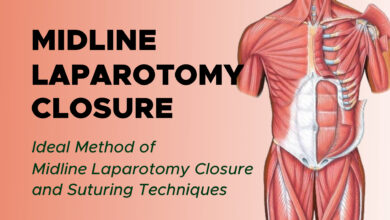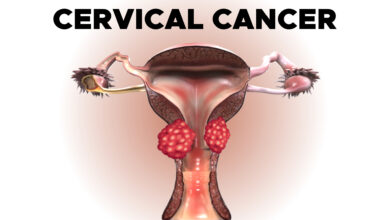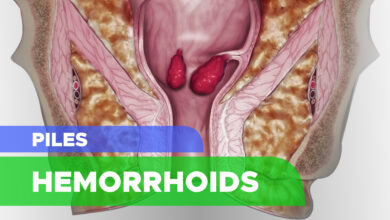
Interesting Physiology: 15 Awesome Facts You May Not Know
This merest smattering of the everyday miracles of the physiology, here are a few for your enjoyment.
Physiology is the science of life. It is the branch of biology that aims to understand the mechanisms of living things, from the basis of cell function at the ionic and molecular level to the integrated behaviour of the whole body and the influence of the external environment.
Research in physiology helps us to understand how the body works in health and how it responds and adapts to the challenges of everyday life; it also helps us to determine what goes wrong in disease, facilitating the development of new treatments and guidelines for maintaining human and animal health.
The emphasis on integrating molecular, cellular, systems and whole body function is what distinguishes physiology from the other life sciences.
Here is a list of the most surprising physiology facts that can help you better understand yourself and life.
1. Unique to You: Hands, Fingers, Thumbs
There they are, down at the end of your arms, one on each side, a matching pair, unique to you in their details. Other humans have them, too, but no other animal has them.
Your hands are certainly far removed from the front paws typical of most mammals, and they’re greatly specialized compared even to those of other primates, including man’s closest evolutionary relatives.
One specialization is the opposable thumb, which is a thumb that can touch each finger on the same hand. (Go ahead – try it now!) Along with that, the human thumb is prehensile, meaning capable of grasping.
2. If That’s Hard to Believe, Consider This
Every square inch of skin contains 20 feet of blood vessels. Tissue the size of a pinhead contains 2,000 to 3,000 capillaries. You certainly have plenty of blood to fill all that space; you have 2.5 trillion red blood cells, more or less, in your body at any given moment, and your bone marrow creates 100 billion new ones every single day.
That’s so much blood that it would take 1.2 million mosquitoes each drinking their fill once to completely drain the average human of blood.
3. Nothing’s Better Than Mother’s Milk
All the copious research that has been done on the topic over many years has pointed in the same direction: The best nutrition for a human baby is human milk.

Human milk is a complex mixture of over 200 different components, and no other substance produced in another animal or yet in a laboratory matches its ability to meet the needs of a human infant.
A baby doesn’t necessarily need its own mother’s milk, though. The composition of milk is remarkably consistent – the age, health status, diet, or geographic location of the mother notwithstanding.
4. It’s Apparent: Your Hair is Different
Along with milk, hair is a defining characteristic of class Mammalia. This class has found hair to be an adaptable accessory and put it to many uses: mechanical protection, UV protection, thermoregulation, sexual selection, social signaling, and waterproofing, among others.
The genus Homo is distinguished by an apparent lack of hair. Evolutionary theorists suggest that the early forebears of Homo were about as hairy as gorillas, who put their hair to use in all the aforementioned ways, making those arrector pili all the more useful. What could have driven so drastic a change in so useful an accessory?
Anatomists note that humans haven’t “lost” their hair – the skin is covered with hair follicles at about the same density as other apes. But the hair itself is different. Most of it is short and fine, and in some cases barely visible. Head hair is longer and coarser than body hair. Head hair and body hair may be curly. (No other primate has curly hair anywhere.)
5. Hard to Stomach? Consider This
With hydrochloric acid inside that’s so corrosive it can dissolve wood and steel, your stomach should consume itself. But it doesn’t. Why? Because you make your own natural supply of antacid. The epithelial cells lining your stomach secrete a steady supply of bicarbonate that neutralizes stomach acid on contact.
6. The Only Thing You Have to Fear is…
The amygdalae are paired structures in the middle brain almost exactly the size and shape of almonds, whence they get their name. They’ve been attracting attention in neuropsychiatry for 60 years – which is pretty much the entire history of neuropsychiatry.
Early research found that neural circuits through the amygdalae connected the midbrain, among the most primitive brain structures, to the frontal cortex, the most advanced. These circuits are part of the limbic system and are thought to be critical in regulating emotion and in guiding emotion-related behaviors.
The amygdalae have been associated clinically with a range of mental and emotional conditions, including depression, autism, and even “normalcy.” Physicians have widely and publicly discussed one case in particular – a woman whose amygdalae are partly nonfunctional. This patient is incapable of experiencing the emotion of fear.
7. You Smell Well
It is often said that, compared with other animals, the human nose is poor at gathering the information available from volatile molecules in the environment. Just how does the human olfactory sense compare with that of other animals? Take a look at the evidence.

As with other mammals, the human olfactory structures are located at the interface of the brain and the airway. Specialized neurons called olfactory neurons, actually protuberances from the brain, sit right on the border of the nasal passages, behind and slightly above the nostrils.
An olfactory neuron bears olfactory receptors on its plasma membrane. An olfactory receptor recognizes a certain chemical feature of an odor molecule, but that feature is present in numerous kinds of odor molecules.
The receptor can bind any odor molecules that have that feature. Thus, humans don’t have a single receptor for “coffee” or “lavender” or “wet dog.” They have many receptors for many kinds of molecules released into the air and drawn into the nose.
8. Skin Shield
The skin isn’t the only thing working against the invading microbial hordes; the enzyme lysozyme found in human tears, saliva, and mucus is custom-made to disintegrate bacterial cell walls. (Remember: As eukaryotes, people’s cells don’t have walls).
9. Microbes: We Are Their World
For thousands of millions of tiny creatures, your gut is the only universe they know. They live and die in that warm, moist, nutrient-rich, immune-protected environment. They work almost every minute of their lives, providing a service to their community and their universe and abiding by the laws of thermodynamics.
These good citizens of the gut are adapted specifically to that environment, in the way of symbiotic organisms, and can survive nowhere else. The internal tissues – blood, bone, muscle, and the others – are normally free of microbes. But the surface tissues – the skin, the digestive and respiratory tracts, and the female urogenital tract – have distinctive colonies of symbiotic microorganisms.
The term symbiosis (adjectival form, symbiotic) describes a more or less cooperative and reciprocal relationship between organisms and species. Symbioses are, by definition, good for all. The microbe colonies derive from the “host” (a particular human body) a steady supply of nutrients, a stable environment, and protection.
The host gets help with some tricky digestive tasks, stimulation of the development and activity of the immune system, and protection against colonization by other, less-well-adapted (pathogenic) microbes. Truly, you’d have difficulty digesting and gaining nutrients from the typical human diet without them.
10. The Pesky Appendix
Your poor little appendix gets quite the bad rap – labeled with words like pointless or vestigial (the proper term for an organ with no function). Although the appendix is much smaller than it was in your hunter-gatherer ancestors (in modern humans, it’s about 4 inches, located where the small intestine meets the large intestine), calling it useless just isn’t quite fair.
Long ago, your diet was full of foliage – lots of leafy greens, nuts, berries, even bark. Wen the chyme (digested food) reached the large intestine, it was bulkier, requiring a larger cecum (pouchlike first segment of the large intestine).
The appendix, also much larger at the time, housed bacteria that made cellulase, the enzyme that breaks down cellulose. They got a meal, and humans got a stool that was easier to pass. Over time, people stopped eating so many cellulose-rich foods and started using heat to help break things down.
The cecum shrunk but maintained its function because it’s still the first part of the large intestine. The appendix apparently lost its purpose, as evidenced by its tiny size and lack of any secretions. Hence, its classification as a vestigial structure.
11. Not That All Microorganisms are Bad
You have between 2 and 5 pounds of bacteria living inside you, much of it in the intestines. As scientists have begun to understand what that microbial life is up to, it has become clear that your internal “microbiome” is a big part of what keeps you healthy.
12. Talkin’ About Breath Control
You don’t have to think about breathing. The steady in-and-out continues while you sleep and go about your daily business. The depth and rhythm adjust to your level of effort. Just climb those stairs; breathing will take care of itself.
Many would die young if breathing required constant attention. Humans are also capable of controlling their breath. Cetaceans (whales and dolphins) can, too; must, in fact, and some also use breath control to sing. Other animals can’t – or at least don’t appear to.
Canines in chorus are not really controlling their breath. Humans use breath control to generate speech. Humans can make finely controlled exhalation pass over the vocal cords while the length and thickness of the cords is changing to generate different frequencies of sound.
The lips, tongue, glottis, and other structures shape the vibration, allowing you to make those finely distinguished sound symbols called “words” and “syllables.” Singing, closely related to talking, requires even finer breath control.
We doubt that such a hypersocial, hypercommunicative species as Homo sapiens could have evolved as far as it has without speech and singing.
13. Taking Your First Breath
You spent your fetal development with fluid in your lungs. Not a problem because your mother “breathed” for you (not that you had access to air anyway). The fluid is squeezed out during delivery and coughed out shortly after. Some of it is absorbed by the lung tissue itself.

So, instantly, with that first scream at birth, the infant’s lungs fill with air and begin gas exchange. Why, then, are respiratory issues the main concern for babies born prematurely? The problem is water. Alveoli that are filled with fluid can’t perform gas exchange, but they do require moisture.
The nasal cavity warms (to get the oxygen molecules moving faster) and moistens the air as we bring it in. That’s why your nostrils feel drier in the winter, the air is drier and pulls more moisture from the lining. The moist air contributes to the thin layer of water that lines the inner wall of the alveoli, allowing for the oxygen and carbon dioxide to move through the walls (between the cells) and into the capillaries.
Unfortunately, water has a high surface tension; the individual molecules are highly attracted to each other. Because alveoli are spherical and lined with water, this creates an inward pull from all directions, collapsing them.
A collapsed alveolus obviously won’t bring in air for gas exchange. In order to counteract the water’s surface tension, thereby keeping the alveoli nice and spherical, the cells secrete surfactant. The production of surfactant is one of the final steps in fetal development.
In fact, one of the protein components of surfactant is thought to be a trigger for the onset of labor. Babies born prematurely don’t yet make surfactant, so they can’t breathe on their own.
Though the presence of surfactant was discovered in the 1950s, it wasn’t until the 1990s that researchers found an effective way to administer it. Since then, the number of premature babies who die from respiratory distress has been cut in half.
14. Every Day 1.5 Liters Saliva
Besides being a digestive kick-starter, saliva prevents tooth decay and keeps your throat and mouth from drying out. It may not feel like it, but those six little glands make nearly half a gallon – about 1.5 liters – of saliva every day. Over the course of a lifetime, that’s enough to fill about two average-sized swimming pools.
15. Is Blood Really Blue?
Nearly every diagram of blood vessels printed in color shows the arteries in red and the veins in blue. People with fair skin can look down at their wrists and see very clear, blue veins. So surely that means the blood in the arteries is red and the blood in the veins is blue, right? Not so much.
First, your blood vessels aren’t see-through. They have several layers of tissues. The fact that your veins appear blue and your arteries are red (though they’re too deep to be seen through the surface of the skin) is related to the color of the tissue layers as well as the color of the blood inside.
And although venous blood is a different color from arterial blood, it’s definitely not blue. Hemoglobin is the predominant protein in the red blood cells (RBCs). Specialized for the transport of the blood gases, hemoglobin has the capacity to transport molecular oxygen (attached to the heme group) and carbon dioxide (attached to the globin portion) simultaneously.
When it’s carrying oxygen molecules, it’s called oxyhemoglobin and is bright red. When it is not full of oxygen, it’s called deoxyhemoglobin and is dark red. Between the darker shade of red and the structures of the walls of the veins, you see a blue color through the skin.



